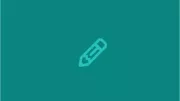Recent Blogs
Blog
Southern Development Agendas versus Northern Angst
India is on a Financial Inclusion roll. In the last couple of months alone, the Government has decided on several policy and regulatory changes that have the potential to significantly accelerate financial access to the more than half of Indian households who remain financially excluded.Blog
Branchless Banking in India: More Reasons for Optimism
In keeping with this optimistic view of a still uncertain India venture, we conclude with three more positive items to highlight. Two reflect new changes by the government and one goes back to the fundamentals.Blog
Bank-led or Mobile-led Financial Inclusion?
Payments are an optimal gateway product for financially underserved households. Unlike credit, insurance, and savings, payments do not require trust by either party.Blog
Mobile International Remittances in the Philippines
Last week, we began a blog series and released a CGAP report on international remittances through mobile banking channels. The series continues this week with guest blogger Paolo Baltao, President of G-Xchange, Inc. (GXI), a wholly owned subsidiary of Globe Telecom in the Philippines. G-Xchange’s GCASH is one of the first mobile wallet services in the world and has been offering international remittances since 2004. In this post, Paolo shares some of the lessons GXI has learned in the past eight years.Blog
The Biggest Social Experiment on the Planet
Millions of Indians—day laborers, beggars, office workers, rich and poor—are lining up to give their fingerprints to register for a government-issued ID. For many, it’s the first time they will have a formal ID.Blog
Making Electronic Money and Banking More Discrete
Electronic money is intangible, and that makes it intrinsically a lot more discreet than piles of cash or physical forms of savings such as jewelry or livestock.Blog
Join CGAP’s Event and Webcast Today on New G2P Focus Note
Join us to discuss the findings from the recent CGAP Focus Note, Social Cash Transfers and Financial Inclusion: Evidence from Four Countries.Blog
What Do International Remittances Mean for Mobile Money?
Since remittances to developing countries were estimated at about $351 billion for 2011, capturing even a small share of this market could be a transformational opportunity for mobile money providers – right?Blog
Product Innovation that Provides Useful Services for the Poor
Mobile money’s first big success in serving poor people came when Kenyans discovered how useful it was to be able to “send money home” safely, quickly and cheaply through M-PESA. As mobile money moves from transfers into savings and loans, it will need to demonstrate a similar leap in the usefulness of its products.Blog
Turning Insights into Products: Applab Money
CGAP, Grameen Foundation and MTN Uganda are introducing Grameen Foundation’s AppLab Money Incubator, a new initiative that develops mobile financial products for the poor.Blog
Enhancing Financial Capability–How Do We Know What Really Works?
In order to achieve the benefits of financial inclusion we need a far better understanding of how to achieve meaningful improvements in the capability of the financially disenfranchised.Blog
Development as Freedom
For Amartya Sen, the Nobel-winning economist and philosopher, development is freedom. Sen’s “freedom” is not the freedom of libertarians—not merely freedom from interference—but increased agency in one’s life, increased control over one’s circumstances.Blog
Branchless Banking and Financial Inclusion for G2P Recipients
The link between financial inclusion and G2P payments must take into account the interests and needs of three main constituencies.Blog
Is There a Business Case for Offering Services to G2P Recipients?
The biggest challenge when it comes to the business case for banks is that the amount per grant payment is small, and as client research has shown, very little of each payment is left behind in the form of savings.Blog
Client Empowerment through Creating a Full Financial Picture
At a functional level, households need only two things – liquidity, to meet their short term and long term requirements, as well as a mechanism for managing risk. However, the financial markets they face are incomplete and segmented, further complicating their choices.Blog
Eko’s Mobile Banking: A Basic Payments Product
Eko was the first company dedicated to a mobile phone-based basic savings account and payment service for the unbanked in India. Launched in 2007, Eko has carefully developed a mobile-based service usable on the most basic of handsets and continually revised and re-fashioned its approach.Blog
Details Matter: Why Isn't Insurance More Popular?
Formal insurance products designed for poor households could theoretically provide critical protection against high-impact events that can push a household deeper into poverty, or send it back into poverty when it manages to lift itself up.Blog
Challenge Funds Incentivize for Innovation
Even with a proliferation of financial products for low-income groups, many people do not know how to use these services, or do not trust them. With rapidly changing financial markets, increasingly complex financial products, and the expansion of technology across formal and informal economies, the need for financial capability amongst the world’s poor is greater than ever.Blog
Segmentation: A Tool to Enhance Activity Levels
Customer segmentation is a powerful marketing tool which can be used to understand customers, design products and tailor advertising messages. It’s based on the premise that some customers will find a service extremely valuable while others couldn’t care less about it.Blog

